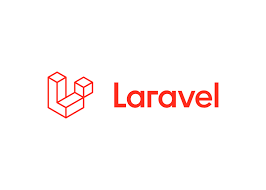Imagine situation: when you start building applications with Laravel, it’s very tempting to place all logic directly in controllers. After all, Eloquent models make querying the database straightforward, so why not just use them everywhere?
But as your application grows, you’ll notice that this approach quickly leads to fat controllers, tangled logic, and difficulties with testing or making future changes. That’s where the Repository Pattern comes into play.
⸻
What is the Repository Pattern?
The Repository Pattern is a design pattern that acts as a mediator between your application logic and data access layer. Instead of querying Eloquent models directly inside controllers or services, you put that logic into dedicated repository classes.
This separation of concerns gives you:
• Cleaner controllers – focused only on handling HTTP requests and responses.
• Testability – you can mock repositories in your unit tests without touching the database.
• Maintainability – changes in data access (e.g., switching from MySQL to PostgreSQL, or even to an API) require minimal changes in your business logic.
• Reusability – one repository can be used by multiple services or controllers.
⸻
Example: Implementing a User Repository
Let’s look at a simple example.
Instead of this (in a controller):
public function login(Request $request)
{
$user = User::where('email', $request->input('email'))->first();
// authentication logic...
}
We’ll create a separate repository class:
// app/Repositories/UserRepository.php
namespace App\Repositories;
use App\Models\User;
class UserRepository
{
public function findByEmail(string $email): ?User
{
return User::where('email', $email)->first();
}
}
Now, inject this repository into your controller:
// app/Http/Controllers/AuthController.php
namespace App\Http\Controllers;
use Illuminate\Http\Request;
use App\Repositories\UserRepository;
class AuthController extends Controller
{
public function login(Request $request, UserRepository $users)
{
$user = $users->findByEmail($request->input('email'));
// handle authentication...
}
}
⸻
Adding Interfaces for More Flexibility
To make it even more flexible, you can define an interface for your repository. This allows you to swap implementations easily (e.g., switch to an external API instead of a database).
// app/Repositories/UserRepositoryInterface.php
namespace App\Repositories;
use App\Models\User;
interface UserRepositoryInterface
{
public function findByEmail(string $email): ?User;
}
Then, implement it in your repository:
// app/Repositories/UserRepository.php
namespace App\Repositories;
use App\Models\User;
class UserRepository implements UserRepositoryInterface
{
public function findByEmail(string $email): ?User
{
return User::where('email', $email)->first();
}
}
And finally, bind the interface to the implementation in a service provider:
// app/Providers/AppServiceProvider.php
public function register(): void
{
$this->app->bind(
\App\Repositories\UserRepositoryInterface::class,
\App\Repositories\UserRepository::class
);
}
Now your controller can depend on the interface, not the concrete class:
public function login(Request $request, UserRepositoryInterface $users)
{
$user = $users->findByEmail($request->input('email'));
// handle authentication...
}
⸻
When Should You Use It?
• Medium to large projects with complex business logic.
• Projects where testing is important (mocking repositories instead of hitting the database).
• Systems that might change data sources in the future.
For small projects, the Repository Pattern may feel like overkill. But in most real-world Laravel applications, it helps you keep code clean, testable, and future-proof.
⸻
Conclusion
The Repository Pattern is one of the most practical best practices you can apply in Laravel. It enforces separation of concerns, keeps controllers slim, improves testability, and makes your project more maintainable in the long run.
If you’re building anything beyond a toy app, consider introducing repositories early—it’s a small investment that pays off big as your project grows.

